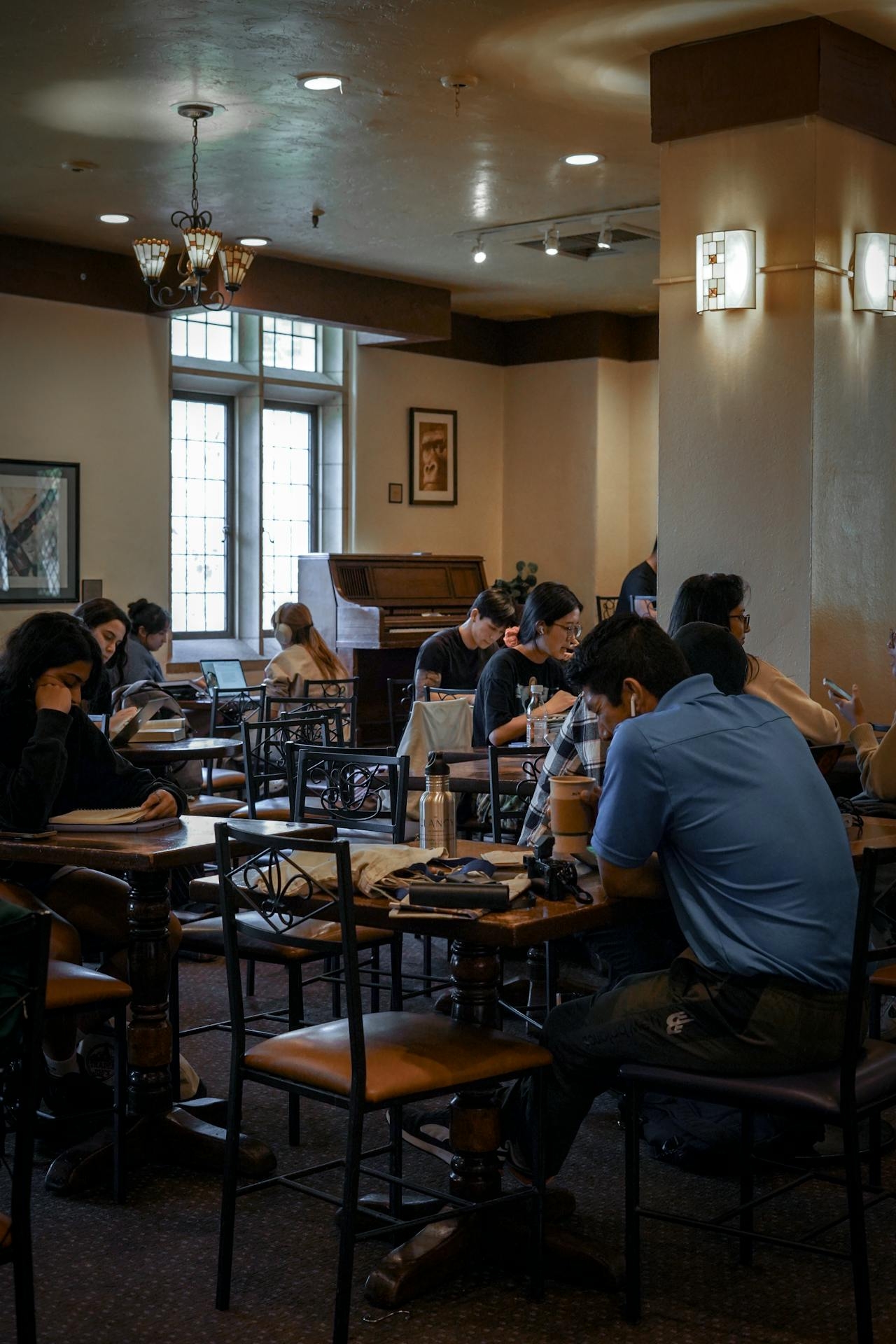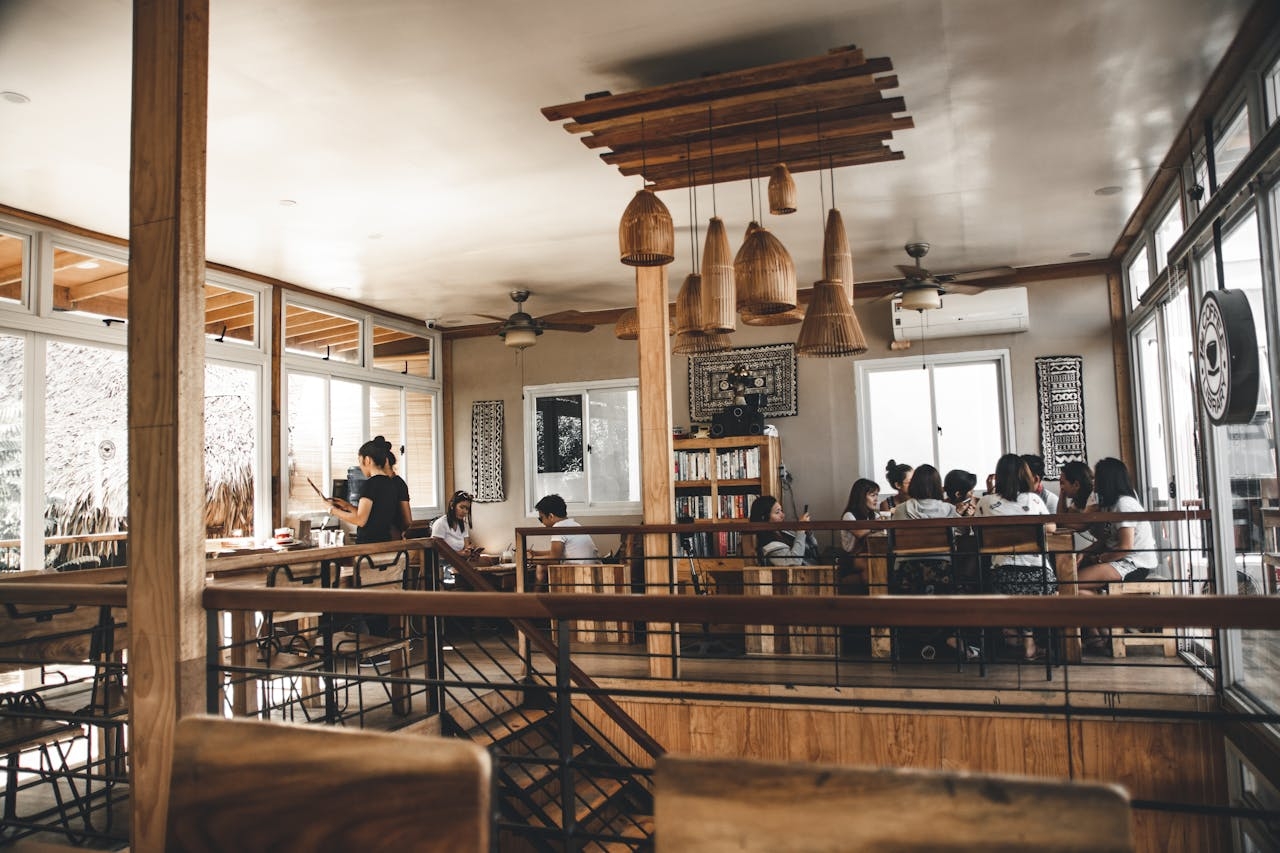Is a Cafe a Restaurant? Exploring the Key Distinctions
By Nikita Nielsen · 11. March 2024
If you’re wondering ‘is a cafe the same as a restaurant?’, you’re likely trying to pinpoint the differences between the two.
While both serve food and drinks, that’s pretty much where the similarities stop. While both establishments offer food and beverages, the similarities largely end there.
A cafe primarily focuses on serving customers in a relaxed setting, offering a variety of meals and beverages that cater to those seeking a casual dining experience, while a restaurant provides a broader selection of meals in a more formal setting.
Let’s break down the cafe vs restaurant comparison, looking at the differences in their menus and the vibes they offer.
Key Takeaways
- Cafes are popular spots for a caffeine fix and some snacks, providing a relaxed atmosphere for students, freelancers, and anyone wanting to enjoy a casual meal.
- Restaurants offer a full dining experience with a range of dishes from starters to desserts, in an environment that’s more upscale than laid-back.
- In a cafe, you typically order at the counter. It’s a laid-back, and sometimes, a serve-yourself style. Restaurants offer a different experience with wait staff who take your order and bring your food to you, providing full table service.
Defining the Cafe: A Closer Look at the Small Restaurant
 small restaurant
small restaurant
The French word ‘cafe’, which means coffee, gives away the primary offering of these small, informal establishments.
Cafes, often seating only a few dozen people at once, provide a relaxed atmosphere perfect for:
- freelancers
- students
- casual meetings
- quick bites and light meals
Let’s dive deeper to understand how cafes differ from restaurants.
The Core of a Cafe: Coffee and Light Fare
At the very heart of any cafe is, of course, coffee. These bustling hubs of activity are often equipped with espresso machines, ready to cater to the diverse preferences of caffeine lovers.
But it’s not just about the coffee.
Cafes serve a variety of light meals, perfect for a quick bite or an informal meeting. Some popular options include:
- Sandwiches and wraps
- Salads
- Pastries and baked goods
- Soups and stews
- Breakfast items like pancakes and omelettes
So whether you’re in the mood for a delicious cup of coffee, a tasty meal, or exploring a variety of alcoholic beverages, most cafes have something for everyone.
From sandwiches🥪 and salads to pastries and desserts, cafes are home to a range of light food that perfectly complements their beverage offerings.
This focus on light meals and snacks, coupled with the cosy atmosphere, makes cafes a go-to destination for those seeking a casual and quick dining experience that serves light meals.
Atmosphere and Design: Comfort Meets Casual
Another defining aspect of a cafe is its atmosphere and design. Cafes are designed with comfort in mind.
The seating is arranged in a way that accommodates different group sizes while enhancing the overall customer experience.
And then there’s the decor, which often features timeless elements like wood and artwork, creating an environment that is both casual and stimulating.
From the strategic use of natural light to the choice of warm and inviting colours, everything in a cafe is designed to cultivate a relaxed atmosphere.
Moreover, the thoughtful organisation of the space, complete with amenities like free WiFi, creates an environment that not only supports individual work but also encourages social interaction, all within a cosy and inviting atmosphere.
Unpacking the Restaurant Concept
 restaurant concept
restaurant concept
Now, let’s turn our attention to restaurants. A restaurant is a place where people go to eat food that they order from a menu, with the food brought to them at their tables.
This concept of serving at small tables, offering printed menus, and providing flexible meal hours was adopted from French café culture and helped shape the modern service model of restaurants.
Variety is the Spice of Life: Full Menu Offerings
One of the key distinctions between a cafe and a restaurant lies in the menu offerings.
Unlike cafes, restaurants offer a variety of specialised and substantial meals, including a range of entrees, side dishes, and desserts.
This facilitates varied culinary experiences tailored to individual needs or special occasions.
In addition to the standard offerings, restaurants often extend their menu to include vegetarian, gluten-free, and other specialised options to accommodate diverse dietary requirements.
This ability to serve a full meal across different meal times makes restaurants an appealing choice for those seeking a complete dining experience.
The Mood of Dining: Establishing a Formal Atmosphere
Another striking difference between a cafe and a restaurant is the atmosphere.
Restaurants are often larger and feature formal seating arrangements and upscale decor, providing a more formal atmosphere than cafes.
This ambiance is further enriched by the availability of fixed-price or tasting menus, promoting a complete and sophisticated dining experience.
Fine dining restaurants may extend dinner service to 2 or 3 hours to accommodate the multiple courses and leisurely pace that characterise a formal dining experience.
With their elegant interiors and socialising-friendly atmosphere, these restaurants are equipped to host formal events and celebrations, as well as serve more substantial meals.
Service Style: Self-Service vs Table Service
Another key distinction lies in the service style. While cafes may offer self-service, particularly for ordering at the coffee bar, they can also provide a level of table service where waiters bring your food to the table once it’s ready.
This hybrid service model caters to those who prefer the convenience of having their meals delivered to them while enjoying the casual atmosphere of a cafe.
Restaurants, on the other hand, are known for their full table service where diners enjoy complete hospitality from the moment they are seated.
Orders are taken at the table, and meals are delivered by waitstaff, ensuring a more formal dining experience.
Some restaurants may also offer limited self-service options, such as a salad bar or buffet, alongside their traditional table service.
Operational Differences: Hours and Meals Covered
When it comes to operation hours⏰, cafes typically open for shorter hours than restaurants, primarily in the mornings and early evenings.
Their breakfast service begins early in the morning and concludes around noon, followed by lunch service that carries on into the mid-afternoon.
Restaurants, on the other hand, offer extended operating hours.
Their lunch service starts after the typical cafe lunch hours, and dinner service commences from around 5:00 PM to 6:00 PM, often lasting until 9:00 PM to 10:00 PM or later.
Pricing and Affordability: Budget-Friendly vs Upscale Options
When it comes to pricing, cafes tend to be more budget-friendly💰. This is primarily because they focus on serving light meals and beverages, which are less expensive to prepare and offer.
Restaurants, however, employ diverse pricing techniques to cater to a broad range of customers and create different dining experiences.
Restaurants with higher prices often provide a perception of luxury or an upscale dining experience.
This contrasts with the perceived value of a cafe’s offerings, which influence customer choices based on affordability and the type of experience they seek.
Making the Choice: When to Opt for a Cafe Over a Restaurant
When choosing between a cafe and a restaurant, your decision hinges on a few key factors.
A cafe’s warm and cosy atmosphere can make you feel good and relaxed, almost like you’re getting a happiness boost.
Plus, cafes often offer a more intimate and private setting, which can make your time there feel more personal, even when you’re out in public.
Alternatively, if you’re seeking an elevated dining experience, a restaurant may be the more suitable choice.
With its wide array of sophisticated dishes, a restaurant provides the perfect backdrop for celebrating milestones or indulging in a gastronomic adventure.
Summary
In conclusion, both cafes and restaurants have their unique charm and offerings.
Whether you’re looking for a quick coffee and a casual catch-up with friends, or a full-course meal in a formal setting, understanding the key distinctions between cafes and restaurants can help you make the right choice.
So, next time you’re wondering where to go, think about what you’re really craving – not just in terms of food, but also atmosphere, service, and experience!
Frequently Asked Questions
What’s the difference between a café and a restaurant?
The key difference between a café and a restaurant is that cafes are open earlier and have a focus on breakfast and lunch items, with a different ambiance compared to restaurants. So, if you’re in need of a hearty breakfast and a cosy coffee spot, head to a café!
What is a cafe considered?
A café is considered a casual dining establishment where you can grab some coffee, tea, and light meals in a cosy and relaxed environment. It’s the perfect spot for catching up with friends or enjoying a peaceful moment with a good book.
What kind of food is served in a cafe?
Cafes serve a variety of lighter fare such as coffee, sandwiches, salads, soups, and pastries, making them perfect for a quick meal or snack.
Are cafes cheaper than restaurants?
Absolutely! Cafes are typically more budget-friendly than restaurants due to their focus on lighter, less expensive meals and drinks. So if you’re looking to save some cash, opt for a cosy cafe over a fancy restaurant.

